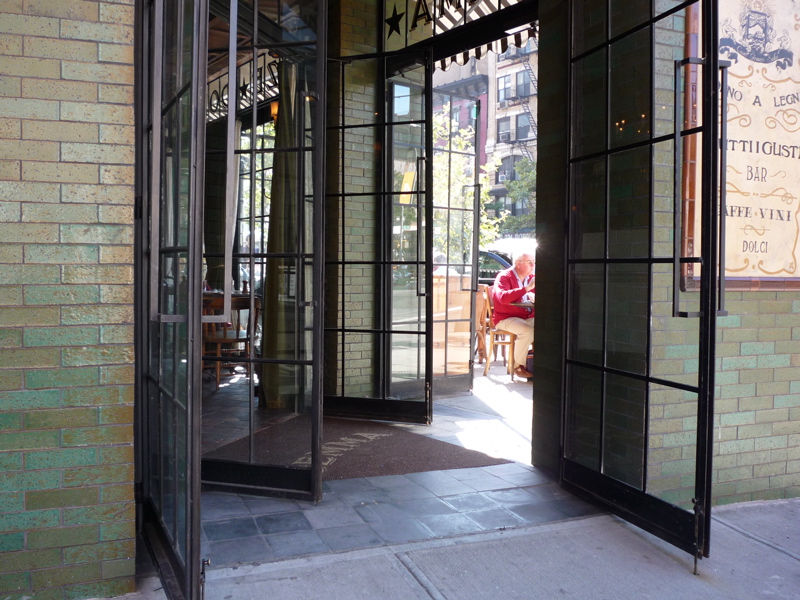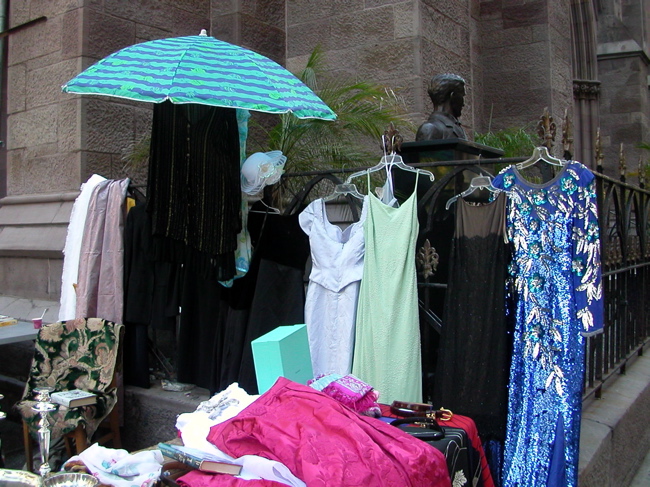Search This Blog
A strolling guide to New York City by writer and photographer Teri Tynes. Active during the years 2007-2021, Walking Off the Big Apple plans new walks away from the city in the summer of 2025.
Posts
Showing posts from September, 2008
Coming this summer 2025
A Hudson River Camino - a cultural and spirit-filled pilgrimage up river.
Gucci, Prada, and Pucci on Fifth Avenue: Thoughts Outside the Box
- Get link
- X
- Other Apps
Ready to Wear, If I Can Find It: Shopping for My Personal Style
- Get link
- X
- Other Apps
Ignoring the News, A Walk Through Little Italy and Soho
- Get link
- X
- Other Apps
Weekend Frivolities: The New York Balcony Vegetable Garden
- Get link
- X
- Other Apps
After the Closing Bell, A Protest March Against the Wall Street Bailout
- Get link
- X
- Other Apps
10 New Books of Interest for the New York State of Mind: On Modernism, Landmarks, the Brooklyn Genius, Pancakes, Pre-Punk History, and more
- Get link
- X
- Other Apps
Fractured Fairytales: The Concealed Pastorals of Cecily Brown
- Get link
- X
- Other Apps
J.P. Elephant: Drawing Babar at the Morgan
- Get link
- X
- Other Apps
Two Hotels for Foodies and Literary-Minded New York Visitors: The Evelyn and The Library
- Get link
- X
- Other Apps
Extreme Quotes on Wall Street, and The Mayor's Vision for New York City 2.0
- Get link
- X
- Other Apps
New York 1900: Edith Wharton and The House of Mirth, A Walk and a Map
- Get link
- X
- Other Apps
Strolling the Museum Mile (and a Half) and Contemplating the Current Financial Crisis (Slideshow)
- Get link
- X
- Other Apps
Walking Off the Wall Street Bears, Part II: The Crisis at Lehman Brothers, and You
- Get link
- X
- Other Apps
New York in The House of Mirth: Social Class, Money, and Speculations on Wall Street
- Get link
- X
- Other Apps
The New York of Edith Wharton's The House of Mirth: Introduction to a Walk
- Get link
- X
- Other Apps
Homage to Pâte à Choux: French Pastry South of 14th Street
- Get link
- X
- Other Apps
Henry James' Uneasy Homecoming to Washington Square
- Get link
- X
- Other Apps
The Making of the Monumental Metropolis: New York and the École des Beaux Arts
- Get link
- X
- Other Apps
More Curiosities from Nooks and Corners of Old New York (1899)
- Get link
- X
- Other Apps
An Exterior View of the New York Stock Exchange, On a Day the Dow Dropped 344.65 Points
- Get link
- X
- Other Apps
June 11, 2025 in Beacon, NY

On a day trip from NYC
















